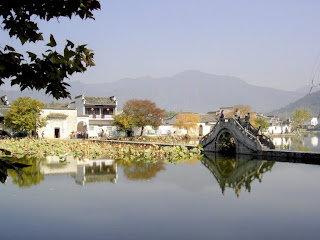Your next culture shock may come from the sheer scale of everything.

Just like Europe, the Chinese subcontinent - we can rightly call it so - has also experienced massive foreign invasions, times of unity and times of great division, flourishing and decline of religions. The point of cohesion, among others, for China's many peoples is the script - the regional dialects are very often mutually unintelligible, unless when written in Chinese characters. In Europe, with all its genetic and cultural diversity, Christianity is the hinge.
 With the population closing in on 1,5 billion people, it is nothing short of amazing that things still actually work here. But they do. Queues in ticket offices are organized by way of steel railing and every underground crossing will have a couple of policemen on patrol, but it is so much safer than you thought it would be and the literal myriads of trains and buses across the country are well maintained, clean and more often than not arrive on time. The much slagged-off public toilets are on every corner and are none dirtier than anywhere else in Europe.
With the population closing in on 1,5 billion people, it is nothing short of amazing that things still actually work here. But they do. Queues in ticket offices are organized by way of steel railing and every underground crossing will have a couple of policemen on patrol, but it is so much safer than you thought it would be and the literal myriads of trains and buses across the country are well maintained, clean and more often than not arrive on time. The much slagged-off public toilets are on every corner and are none dirtier than anywhere else in Europe.- Beijing - Grandeur, Rusticity & Russiatown
- Great Wall In Autumn Hues
- Pingyao - A Feel Of The Days Long Gone By
- Xi'an - Terracotta Army, Hot Springs & Mosques
- Nanjing - The Swanky Capital Of South
- Yangzhou - The Treasure Box Garden
- Suzhou - The Silk Capital Of China
- Tongli - The Water Village
- Tunxi - Breezy Gateway to Huangshan
- Huangshan - Mountain Range From A Classical Chinese Poem
- Hongcun - Water Buffalo Shaped Village
- Shanghai - Carnival Of Life




























































